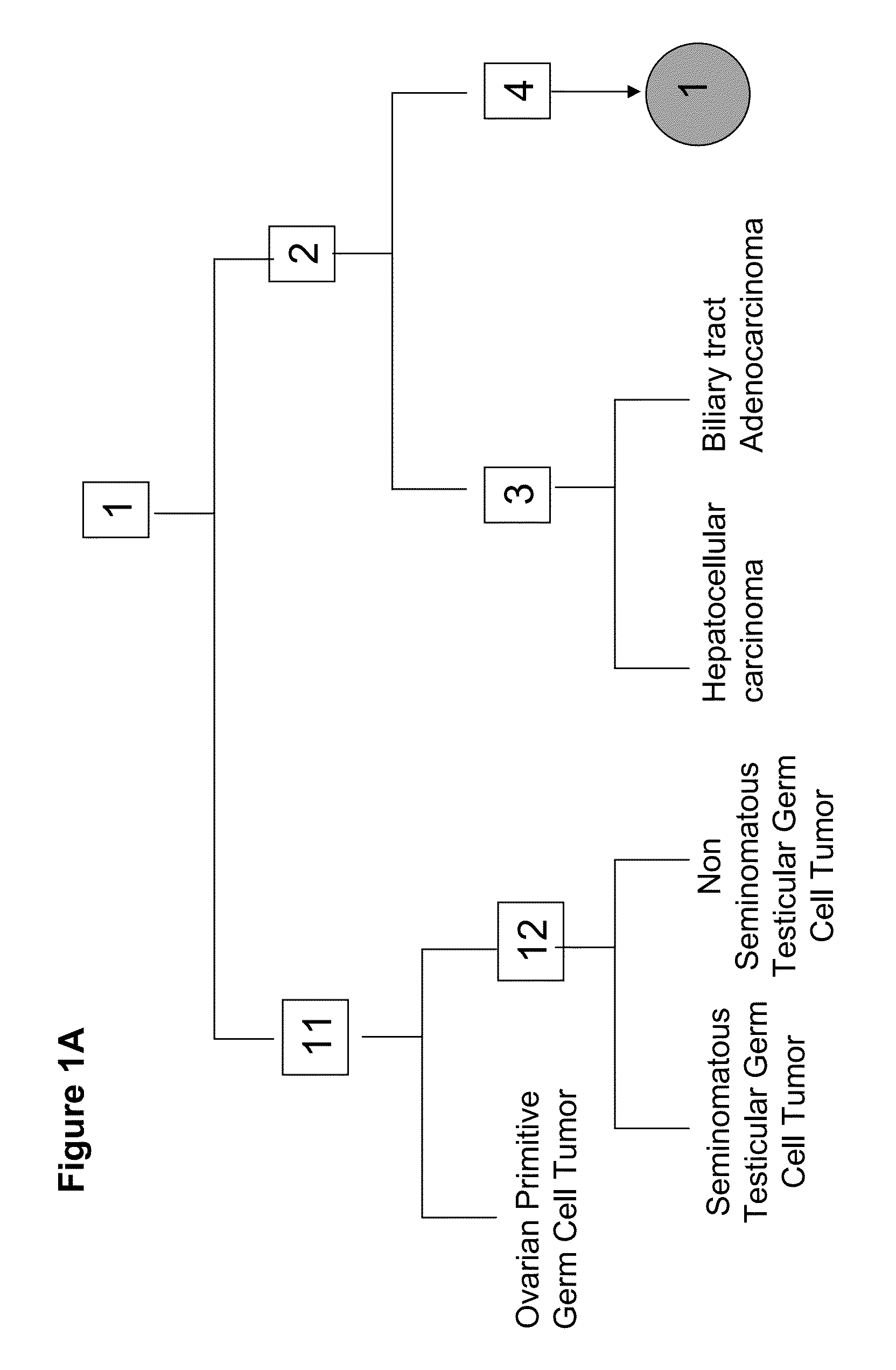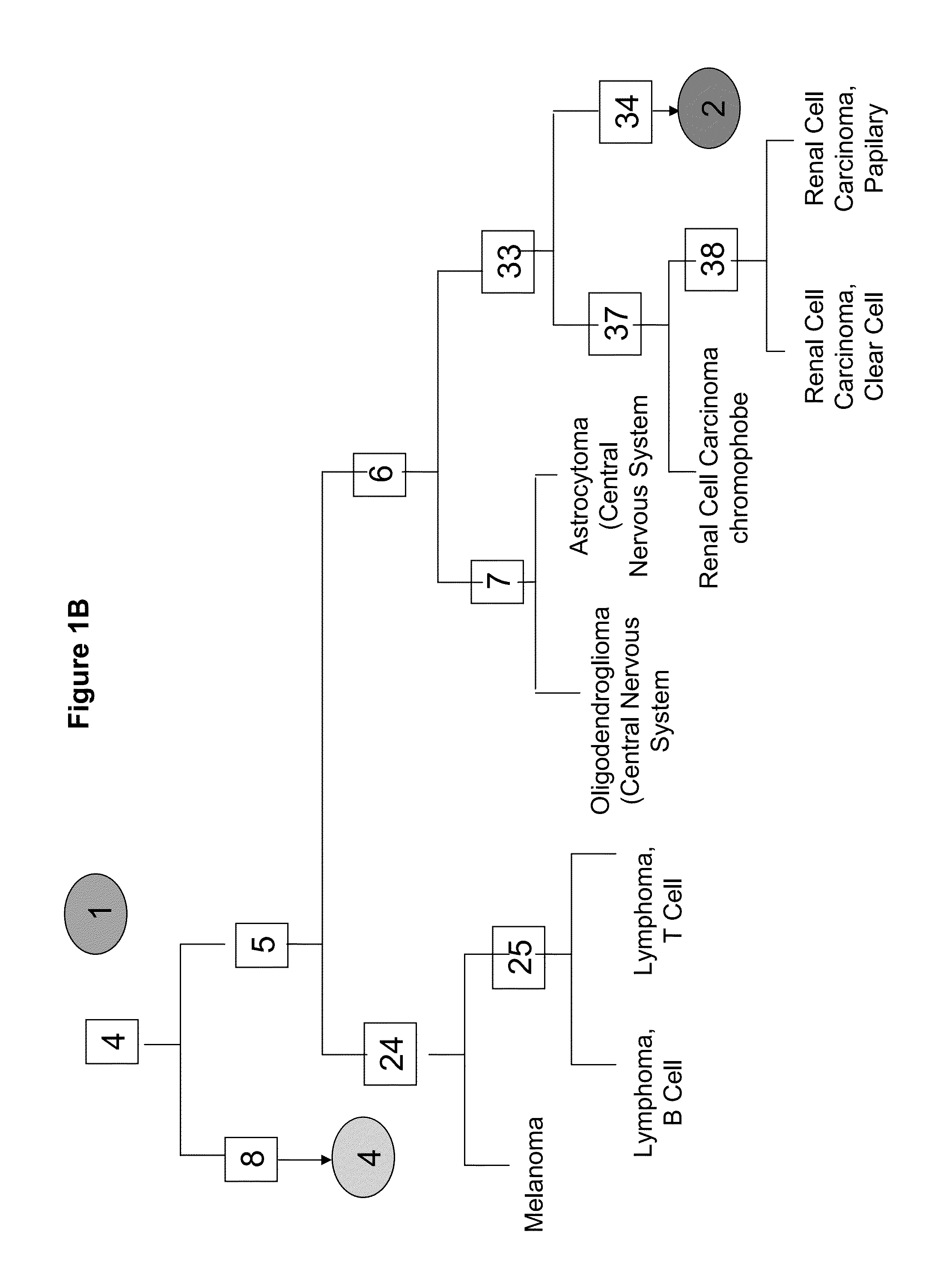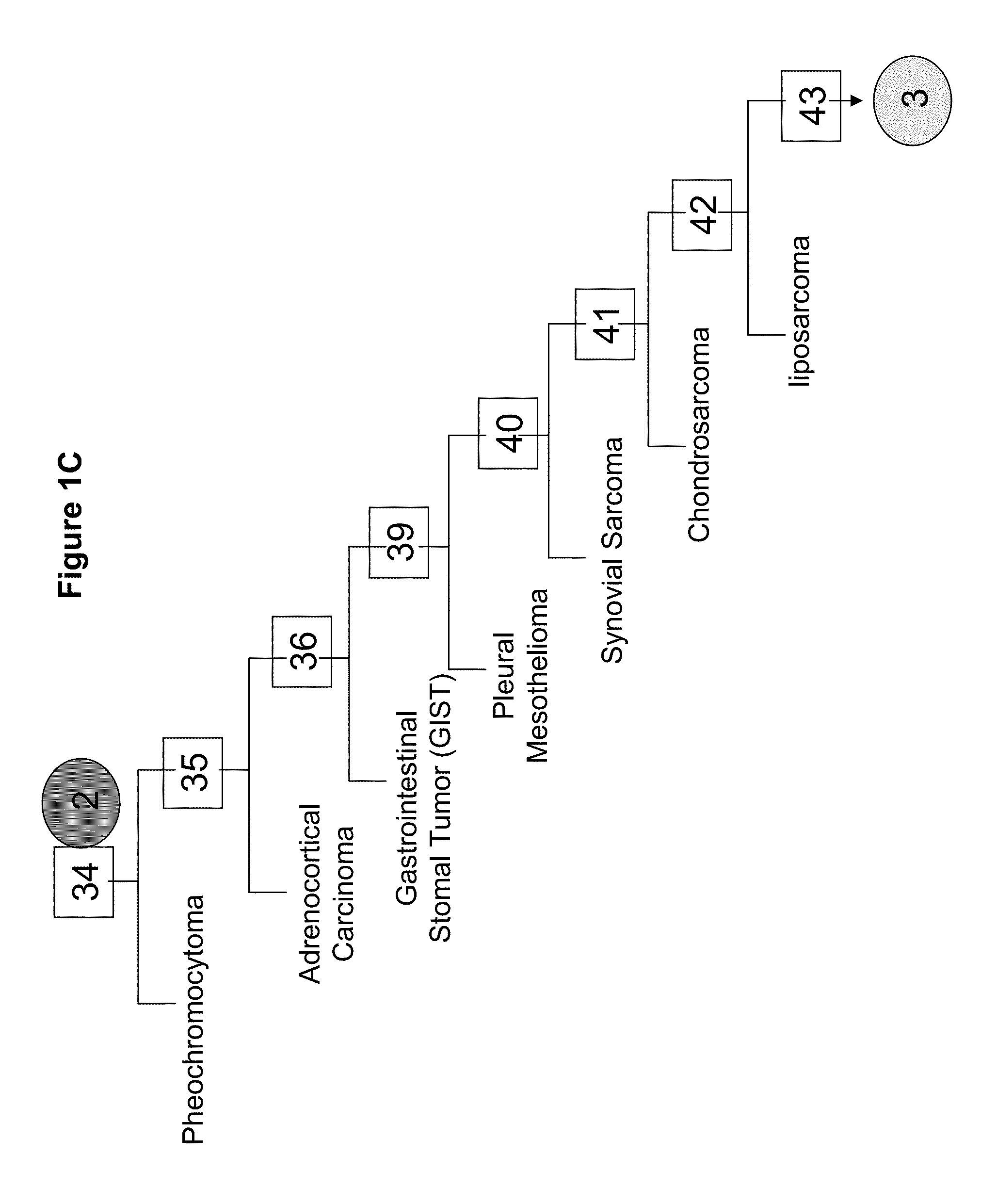Gene expression signature for classification of tissue of origin of tumor samples
a gene expression and tumor tissue technology, applied in the field of gene expression signatures for tumor tissue origin classification, can solve the problems of undefined diagnostic accuracy of tumor markers, oncologists and pathologists are constantly faced with diagnostic dilemmas, etc., and achieve the effect of accurate identification of tumor tissue origin
- Summary
- Abstract
- Description
- Claims
- Application Information
AI Technical Summary
Benefits of technology
Problems solved by technology
Method used
Image
Examples
example 1
Decision-Tree Classification Algorithm
[0312]A tumor classifier was built using the microRNA expression levels by applying a binary tree classification scheme (FIGS. 1A-F). This framework is set up to utilize the specificity of microRNAs in tissue differentiation and embryogenesis: different microRNAs are involved in various stages of tissue specification, and are used by the algorithm at different decision points or “nodes”. The tree breaks up the complex multi-tissue classification problem into a set of simpler binary decisions. At each node, classes which branch out earlier in the tree are not considered, reducing interference from irrelevant samples and further simplifying the decision. The decision at each node can then be accomplished using only a small number of microRNA biomarkers, which have well-defined roles in the classification (Table 2). The structure of the binary tree was based on a hierarchy of tissue development and morphological similarity18, which was modified by ...
example 2
Expression of miRs Provides for Distinguishing Between Tumors
[0315]
TABLE 3miR expression (in florescence units) distinguishing between the group consisting of germ-cell tumors and the group consisting of all other tumorsfold-SEQ IDmedian valueschangep-valueNO. miR name2.7e+004-5.0e+001545.73 (+) 233hsa-miR-3731.8e+004-5.0e+001365.93 (+) 55hsa-miR-3728.6e+003-5.0e+001171.72 (+) 200hsa-miR-371-3p5.9e+003-5.1e+001115.94 (+)7.3e−249201hsa-miR-371-5p+ for all the listed miRs, the higher expression is in tumors from a germ-cell origin.
[0316]hsa-miR-372 (SEQ ID NO: 55) is used at node 1 of the binary-tree-classifier detailed in the invention to distinguish between germ-cell tumors and all other tumors.
[0317]FIGS. 2A-D are boxplot presentations comparing distribution of the expression of the statistically significant miRs in tumor samples from the “germ cell” class (left box) and “non germ cell” class (right box).
[0318]
TABLE 4miR expression (in florescence units) distinguishing between the ...
PUM
 Login to View More
Login to View More Abstract
Description
Claims
Application Information
 Login to View More
Login to View More - R&D
- Intellectual Property
- Life Sciences
- Materials
- Tech Scout
- Unparalleled Data Quality
- Higher Quality Content
- 60% Fewer Hallucinations
Browse by: Latest US Patents, China's latest patents, Technical Efficacy Thesaurus, Application Domain, Technology Topic, Popular Technical Reports.
© 2025 PatSnap. All rights reserved.Legal|Privacy policy|Modern Slavery Act Transparency Statement|Sitemap|About US| Contact US: help@patsnap.com



